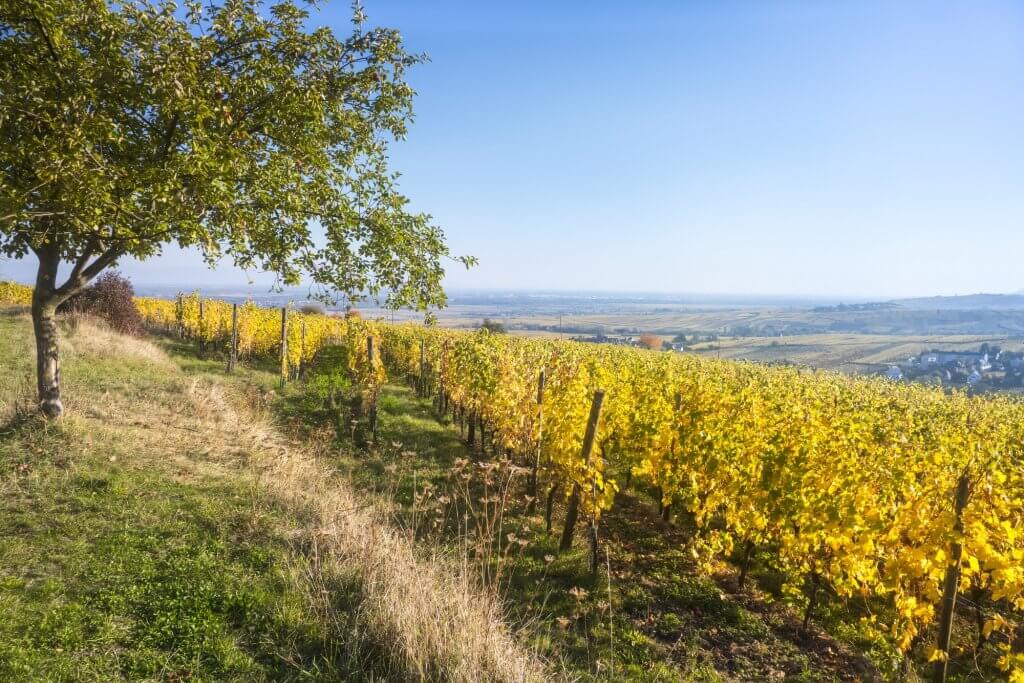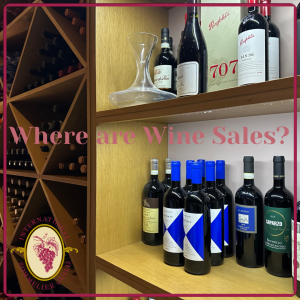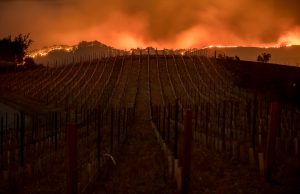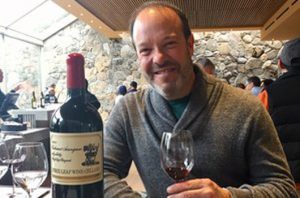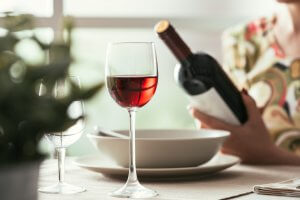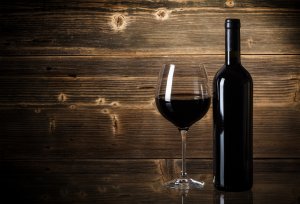While Bordeaux certainly holds firm ground at the top echelon of French wine, the Rhône region of France is also considered among the finest. Just south of Lyon and spanning nearly to the Mediterranean Sea, the Rhône is home to appellations named for the communes that dot the river banks.
As Bordeaux has the Left Bank and Right Bank, Rhône has the North and the South. Northern Rhône includes the town of Vienne down to just south of Valence. In Northern Rhone, Syrah, or Shiraz as it is known elsewhere, is the only red grape permitted in the wines though some white grapes may be used with very specific conditions. The whites have more leeway with Viognier, Roussanne, and Marsanne grapes.
Perhaps you’ve sampled Australian Shiraz and wonder what might be different with the wines of Northern Rhone. In short, the cooler conditions, higher elevations, and those intensely rocky soils all play a hand in giving Syrah from the North a drier and more acidic taste. It’s a bit herbal and smoky, often compared to the pleasurable flavor of bacon fat.
A Tale of Two Regions
Size-wise, Northern Rhône is smaller than Southern Rhone. In fact, all of Northern Rhône is smaller than one of the South’s most prized appellations, Châteauneuf-du-Pape. Most of the wines (95% of them) come from the South.
In Northern Rhone, temperatures are much cooler and the climate provides more rain. Here, the growing season is also shorter with notable changes throughout the four seasons. With the unrivaled Mediterranean climate, steep hillsides, and rocky soils, the grapes that are permitted to grow here thrive. Add to it the natural moisture that comes via the Rhône river and you’ve got an exceptional microclimate that produces exquisite grapes.
Northern Rhone
All told, there are eight appellations in the Northern Rhône Valley. Côte-Rôtie is where Syrah is vinified with Viognier, a white grape that serves to make it appear even darker. Translating to ‘baked slope,’ it’s named for the terroir. Most of the appellations in the North allow a fixed percentage of white wine grapes to be blended, but in this appellation, some producers won’t just blend. They’ll often co-ferment just a small amount of Viognier.
Côte-Rôtie wines are exotically silky and treasures to behold. It’s not just the flavor but the texture as well. High demand and small size mean these will cost you a pretty penny but they’re well worth the splurge.
Moving southward in the Northern Rhône Valley, Condrieu is next where white wine is produced. Only Viognier is allowed and you’ll know it from the spectacularly floral aromas. Condrieu wines are noted for having some of the most beautiful bouquet of aromas in the world. To the taste, the wine is quite rich and evokes the flavors of lychee.
With Condrieu, most growers use French oak barrels for vinification. Others use both stainless steel tanks and oak barrels. It varies from producer to producer as well as influence from the vintage. Skin contact and malolactic fermentation all go down in the barrels. Aging often varies between 6 to 18 months, though the best results seem to come from 6 to 9 months aging before bottling. You’ll find it in sweet, dry, and even a middle ground between these 2 extremes.
The appellation of Chateau Grillet only has one chateau. It crafts exceptional white wine from Viognier. To try it is to be on top of the world for it’s not easy to come by and is incredibly pricey.
Saint-Joseph, Crozes-Hermitage, and Hermitage all make reds from Syrah and whites from Marsanne and Roussanne. The notable whites from these Northern Rhône appellations are intense, made only in small amounts. With Saint-Joseph, there has been a shift toward biodynamic farming. The AOC laws permit blending of up to 10% white wine grapes with the red as long as the grapes used are co-fermented. Stainless steel tanks seem to be favored here though aging takes place in oak barrels. After aging, the treat is discovering these feminine wines that can be enjoyed very early on at very reasonable prices.
Crozes-Hermitage wines are typically made with destemmed grapes though traditionalists use whole bunches for vinification, all in concrete tanks. Cooperatives use stainless steel vats though. Depending on the producers, you’ll see pump-overs and cap punching but new and used French oak barrels and demi-muids are put the use.
Cornas focuses on only Syrah reds. In this appellation, vinification uses open-top cement vats of traditional styles but other growers tend to prefer stainless steel tanks. New oak isn’t as popular here, leading to more masculine wines with gritty tannins and a dark berry flavor.
Saint-Peray makes whites from Marsanne and Roussanne. It’s split with 40% sparkling and 60% as dry white wine. As per the AOC, sparkling wines of Saint-Peray must be produced using the same method as Champagne.
Southern Rhone
The appellations in Southern Rhône run from either side of the river and onward to the mountains and valleys. As mentioned, it’s much larger than the North and thus, the terroirs, microclimates, soils, and the wines that come from it are all incredibly varied.
While it’s not entirely fair to generalize, compared to the North, wines of Southern Rhône are often lighter, more open, sweeter, and contain more alcohol. These are the wines to seek out if you enjoy fruitier flavors. It’s ripe, fresh, and often holds hints of those lovely Provencal herbs with just a hit of spice to accentuate it.
Southern Rhône has something for every wine lover including reds, whites, sparkling wines, and rosé. Most of the time, the wines from this region don’t need to age which is ideal for those who can’t wait to uncork a bottle.
Here, the climate is hotter with less rain. Another key difference is that 15 different grapes are permitted to be grown in the South. It does have similar rules as its northernly neighbor for blending red and white grapes but there is more room to express with unique characteristics and styles.
Grenache is the clear darling of Southern Rhone. It’s planted everywhere in this region, though one appellation is the pinnacle of perfection for it, responsible for putting the South on the map, Chateauneuf du Pape.
Key Southern Rhône Appellations
Chateauneuf du Pape became an official appellation in 1936 and holds the title for using 15 different grapes. Some producers even use all 15 of those grape varieties in the wines they create. Plus, the terroir of Chateauneuf du Pape is very diverse with stone, sand, rocks, limestone, and clay. Chateauneuf du Pape also has the mistrals going for it. These are very strong, dry, and cold winds that blow over 60mph. They are outstanding for repelling insects as well as keeping the air and grapes clean.
For a wine to be considered as part of Chateauneuf du Pape, the vines from which the grapes grow must come from one of the 5 communes. Chateauneuf du Pape is by far the largest. The others are Bedarrides, Orange, Sorgues, and Courthezon. When choosing wine from Chateauneuf du Pape, you’ll find a broad range of styles. Some are elegant while others are full-bodied. They’re easy to enjoy, and even easier to fall in love with.
Cotes du Rhône offers outstanding young wines at affordable price points. Character-driven, the reds tend to be fruity and sweet with just enough spice and ripe red berries. They’re quite food-friendly too.
Of distinction are the Cotes du Rhône Villages, a higher level while Cotes du Rhône lacks the same prestige due to its terroir. For either instance, the vineyards need to be in one of the 18 named villages of the Cotes du Rhône appellation. If it sounds large, it is. It’s the second largest in all of France only behind Bordeaux. The incredible variety of terroir and soil from rocky to sandy and everything in between makes for an abundance of unique wines. Like Chateauneuf du Pape, you’ll find red, white, sparkling, and rose, though you’ll also find sweet dessert wines too in Cotes du Rhone. Grenache dominates the reds while Grenache Blanc is the most important grape for the whites.
Another Southern Rhône appellation to note is Gigondas. It was part of Cotes du Rhône until 1971 when it was given AOC status. Gigondas sits just northeast of Chateauneuf du Pape and has three notable terroirs. There are gravel and clay soils that are dominant in the flat areas. On the bottom of the slopes, more gravel and sand persist with less clay. The hillsides are formed with limestone, rocks, and clay. Overall, it’s cooler so you will find wines that taste less ripe and are lower in alcohol content. They’re rustic and slightly less complex though they have green olive characteristics and bode well with aging around 2 years.
Gigondas wines have improved throughout the years with Grenache marking it as the most important grape. Naturally, the AOC has rules for Gigondas that the wines here must be a minimum of 50% Grenache.
Over the years, the wines of Gigondas have gotten better and better. Grenache is the most important grape in the appellation. In fact the AOC rules state to be a wine of Gigondas, all wines must be at least 50% Grenache.
While Rhône might not be Bordeaux, it should never be overlooked. It’s also less mystifying to understand than the Bordeaux region. According to Robert Parker, they have continued to rise in value yet are more affordable than some of the more notable regions, both in France and even in the states.
The quality continues to improve yet the prices aren’t soaring, making for more reason to grab a bottle of Rhône wine to enjoy with dinner or friends. Naturally, the best part of every wine region is discovering the notable appellations within it. Perhaps a tasting is in order with something from the North and the South to round it all out.

